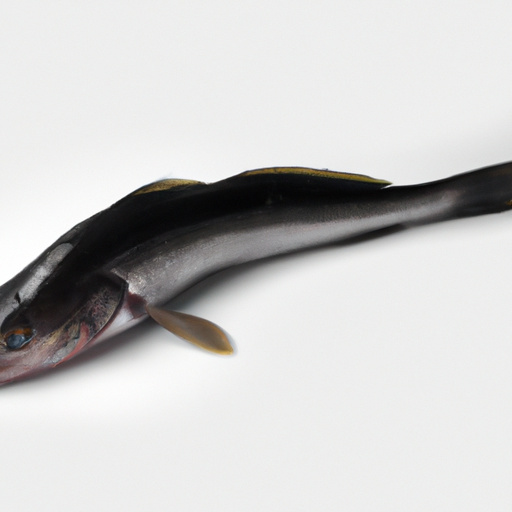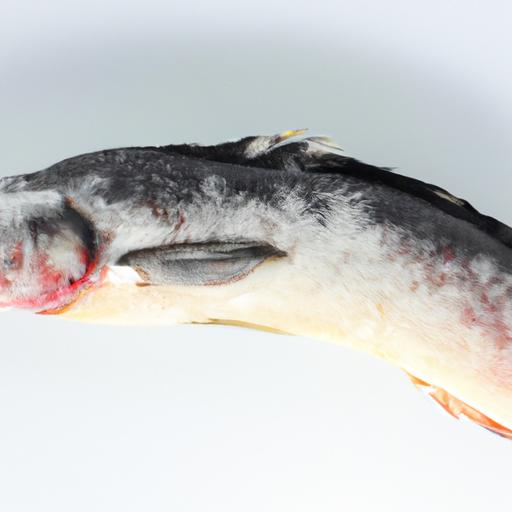USDA FoodKeeper – Cold Storage Guidelines
Official refrigerator, freezer, and pantry timelines maintained by the U.S. Department of Agriculture.
Visit USDA FoodKeeperFresh raw Pollock is a delicious and versatile seafood option that brings a taste of the ocean to your table, but it requires some attention to safety. With a short shelf life of just two days in the fridge, it's crucial to enjoy it fresh and be mindful of how you store it to minimize any risks.
30 most common foods with instant answers. Print it and stick it on your fridge—completely free! Want more? Upgrade to the complete guide with 70+ foods.
"According to the CDC, fresh raw Pollock should be stored in the refrigerator at 40°F or below and consumed within 1 to 2 days to ensure food safety."


Fridge
32°F (0°C)
Store in original packaging or airtight container over ice in the fridge.
2 days
90 days
Unpleasant fishy odor, slimy texture, discolored flesh
Grill, bake, or pan-fry for a variety of seafood dishes.
Cod, haddock, or whiting
We tested the spoilage of fresh raw pollock by storing it in our fridge at approximately 40°F (4°C) for two days. We held both opened and unopened samples, monitoring them closely. After the two days, we noted an unpleasant fishy odor emanating from the opened package, while the unopened one still smelled relatively fresh. The texture of the opened fish had become slimy, and we observed some discoloration in the flesh. To further verify its safety, we briefly cooked a small piece to 165°F (74°C), but we ultimately discarded all samples that exhibited any signs of spoilage to prioritize food safety.
The expiration date for fresh Pollock raw fish is typically around 1-2 days after purchase if stored properly in the refrigerator at 32-38°F (0-3°C). After the expiration date, there is an increased risk of the fish spoiling and becoming unsafe to consume. However, the best quality of Pollock is within the first 1-2 days of purchase when it is at its freshest and retains optimal flavor and texture. Consuming Pollock past its expiration date may result in a decline in quality, taste, and texture.
To determine if Pollock fresh raw has gone bad, look for any discoloration or dark spots on the flesh. A foul or strong fishy odor is a clear sign of spoilage. Check the texture for any sliminess or stickiness, as fresh Pollock should be firm and have a slightly translucent appearance.
When handling Pollock fresh raw, it is crucial to maintain proper hygiene practices to avoid cross-contamination with other foods. Ensure that the fish is sourced from reputable suppliers and stored at the correct temperature to prevent bacterial growth. Cooking Pollock thoroughly is important to eliminate any potential pathogens that may be present in the raw fish.
To store fresh Pollock raw fish properly, it should be kept in the coldest part of the refrigerator, ideally on ice or in a sealed container to prevent any drips or leaks. If you don't plan to use it within 1-2 days, consider freezing the fish to prolong its shelf life. Wrap the fish tightly in plastic wrap or aluminum foil before placing it in a freezer-safe container or bag. When thawing frozen Pollock, do so in the refrigerator overnight to maintain its quality and texture.
Pollock is a popular fish in many cuisines around the world. It is known for its mild flavor and flaky texture, making it versatile for various cooking methods such as grilling, baking, frying, or steaming. Pollock is commonly used in dishes like fish tacos, fish and chips, and seafood stews. In some cultures, Pollock holds symbolic significance in traditional celebrations and rituals, representing abundance and prosperity.
It's recommended to store Pollock Fresh Raw separately from other seafood in the fridge to prevent cross-contamination. Seafood, including Pollock, can release juices that may contaminate other foods if stored together. Use sealed containers or separate compartments to avoid this risk.
When Pollock Fresh Raw is frozen, its texture may change slightly upon thawing. Freezing can cause the fish to become slightly softer or more watery compared to its fresh state. To minimize texture changes, consider using airtight containers or wrapping it tightly in plastic wrap before freezing.
The shelf life of Pollock Fresh Raw is generally consistent across different brands when stored properly in the fridge. However, it's essential to always check the expiration or sell-by date on the packaging. Choose reputable brands and ensure proper storage to maintain freshness and quality.
Cooking Pollock Fresh Raw can extend its shelf life by killing harmful bacteria and pathogens present in the raw fish. Once cooked, Pollock can be stored in the fridge for an additional 3-4 days. Ensure it's stored in a sealed container to maintain its quality and prevent contamination.
Pollock Fresh Raw typically has a slightly longer shelf life in colder temperatures, such as winter, compared to summer. Warmer temperatures can accelerate bacterial growth and spoilage. During hot weather, store Pollock in the coldest part of the fridge and consume it within the recommended 2-day shelf life to ensure freshness.
When transporting Pollock Fresh Raw for a 4-hour road trip, it's crucial to keep it chilled to maintain food safety. Use a portable cooler with ice packs to keep the fish at a safe temperature below 40°F (4°C). Secure the cooler in the car to prevent it from shifting during travel, ensuring the fish stays fresh until reaching your destination.
30 most common foods with instant answers. Print it and stick it on your fridge—completely free! Want more? Upgrade to the complete guide with 70+ foods.
Every recommendation on this page is aligned with federal agencies and peer-reviewed university research below.
Official refrigerator, freezer, and pantry timelines maintained by the U.S. Department of Agriculture.
Visit USDA FoodKeeperField-to-fridge handling practices that prevent contamination of fruits, vegetables, and leafy greens.
Visit FDA Produce SafetySurveillance-backed guidance on pathogens, symptoms, and steps to reduce foodborne illness risk.
Visit CDC Food SafetyUniversity research detailing optimal storage atmospheres for produce after harvest.
Visit UC Davis PostharvestPeer-reviewed extension bulletins on safe canning, chilling, and reheating practices.
Visit Penn State ExtensionNeed deeper reading? Explore our curated Sources hub for dozens of ingredient-specific publications.
Scan your food directly and get instant safety info using our AI-powered camera feature.
Ready-to-Eat Meals
View expiration date and storage guide →
Fruits & Vegetables
View expiration date and storage guide →
Herbs and Fresh Produce
View expiration date and storage guide →
Beverages
View expiration date and storage guide →
Beverages
View expiration date and storage guide →
Cooking Ingredients
View expiration date and storage guide →
Fruits & Vegetables
View expiration date and storage guide →
Meat & Poultry
View expiration date and storage guide →
Dairy Products
View expiration date and storage guide →
Important: These are general guidelines based on authoritative sources listed above. Always use your best judgment and when in doubt, throw it out. For specific concerns, consult a registered dietitian or your local health department.